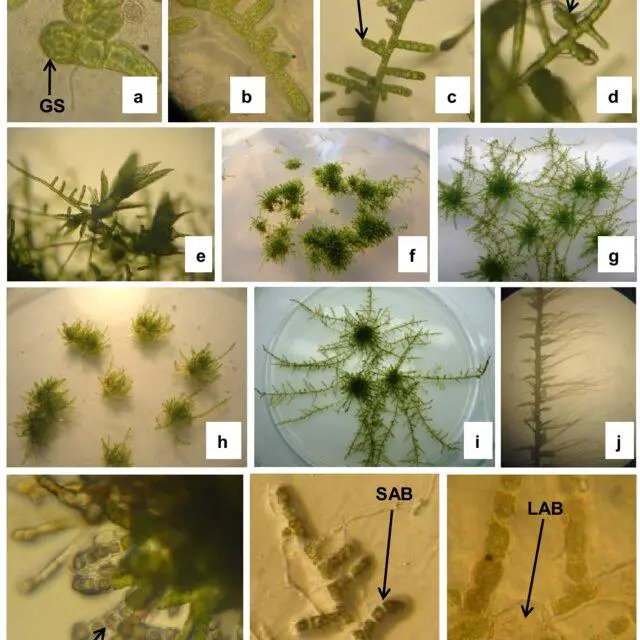
Syntrichia-amphidiacea-MuellHal-RH-Zander-1-plant-2-cross-section-of-stem-3_Q640.jpg from: https://www.researchgate.net/figure/Syntrichia-amphidiacea-MuellHal-RH-Zander-1-plant-2-cross-section-of-stem-3_fig1_316686567
Introduction
In the vast and captivating world of bryophytes, one tiny moss has captured the hearts of enthusiasts and scientists alike – the Syntrichia fontana (Müll.Hal.) R.H.Zander. This unassuming yet resilient member of the

Tortella-lilliputana-Muell-Hal-ex-Roth-RH-Zander-A-Habit-B-C-Leaves-D-Median.png from: https://www.researchgate.net/figure/Tortella-lilliputana-Muell-Hal-ex-Roth-RH-Zander-A-Habit-B-C-Leaves-D-Median_fig9_296705710
Pottiaceae family, commonly known as Syntrichia, has carved out a unique niche in the intricate tapestry of nature.
Background
Before delving into the intricacies of this remarkable moss, let’s set the stage. Bryophytes, a diverse group encompassing mosses, liverworts, and hornworts, are often overlooked but play a crucial role in terrestrial ecosystems. These diminutive plants lack true vascular systems, yet they possess an extraordinary ability to thrive in seemingly inhospitable environments.
Main Content
Morphology and Identification
Syntrichia fontana is a true marvel of adaptation. Its slender, wiry stems form dense tufts or cushions, adorned with tiny, lance-shaped leaves that curl tightly when dry, protecting the delicate inner tissues. Upon rehydration, these leaves unfurl, revealing a vibrant green hue that belies their resilience.
One of the most distinctive features of Syntrichia fontana is its twisted peristome – a ring of teeth surrounding the capsule’s opening. This intricate structure aids in spore dispersal, ensuring the perpetuation of this remarkable species.
Global Distribution and Habitat
Syntrichia fontana is a true globetrotter, found on every continent except Antarctica. Its ability to thrive in a wide range of habitats, from arid deserts to urban environments, is nothing short of remarkable. This moss can be found clinging tenaciously to rocks, soil, tree bark, and even concrete surfaces, defying the harshest conditions with its remarkable adaptations.
Ecological Roles and Adaptations
Despite its diminutive stature, Syntrichia fontana plays a vital role in its ecosystems. As a pioneer species, it helps stabilize and enrich barren substrates, paving the way for more complex plant communities to establish themselves. Additionally, this moss serves as a crucial microhabitat for a myriad of microscopic organisms, contributing to the intricate web of life.

392767.jpg from: https://inpn.mnhn.fr/espece/cd_nom/434243
One of the most fascinating adaptations of Syntrichia fontana is its ability to enter a state of desiccation tolerance, enabling it to survive prolonged periods of drought. When conditions become unfavorable, the moss essentially shuts down its metabolic processes, only to revive and resume growth when moisture returns.
Case Studies/Examples
In the arid regions of the American Southwest, Syntrichia fontana has become a subject of intense study. Researchers have marveled at its ability to thrive in the harshest of desert environments, where it plays a crucial role in stabilizing soil and facilitating the establishment of other plant species.

Figura-1-A-Weissia-controversa-Hedw-mostrando-el-gametofito-color-verde-y.jpg from: https://www.researchgate.net/figure/Figura-1-A-Weissia-controversa-Hedw-mostrando-el-gametofito-color-verde-y_fig1_341744982
Technical Table

Figura-15-Uleastrum-palmicola-Muell-Hal-RH-Zander-a-b-Aspecto-geral-do.png from: https://www.researchgate.net/figure/Figura-15-Uleastrum-palmicola-Muell-Hal-RH-Zander-a-b-Aspecto-geral-do_fig6_262547004

a-m-In-vitro-growth-of-Entodon-macropodus-Hedw-Muell-Hal-a-Germinated-spores-b-c_Q640.jpg from: https://www.researchgate.net/figure/a-m-In-vitro-growth-of-Entodon-macropodus-Hedw-Muell-Hal-a-Germinated-spores-b-c_fig1_269775914

Eobryum-hildebrandtii-MuellHal-RHZander-A-Dry-habit-B-Moist-habit-C-E-Leaves.png from: https://www.researchgate.net/figure/Eobryum-hildebrandtii-MuellHal-RHZander-A-Dry-habit-B-Moist-habit-C-E-Leaves_fig1_353979761

Erythrophyllopsis-andina-Sull-RH-Zander-A-Habit-B-C-Leaves-D-Leaf-apex-E_Q320.jpg from: https://www.researchgate.net/figure/Trichostomum-termitarum-Muell-Hal-RH-Zander-A-Leaf-B-Leaf-apex-C-Marginal_fig11_296705710

largepreview.png from: https://www.researchgate.net/publication/334443742_The_complete_chloroplast_genome_of_an_Antarctic_moss_Syntrichia_filaris_MullHal_RH_Zander
| Characteristic | Description |
|---|---|
| Phylum | Bryophyta |
| Class | Bryopsida |
| Order | Pottiaceae |
| Genus | Syntrichia |
| Species | fontana |
| Common Name | Syntrichia moss |
| Growth Form | Cushion or tuft |
| Leaf Shape | Lance-shaped, curled when dry |
| Capsule | With twisted peristome |
| Habitat | Rocks, soil, tree bark, concrete |
| Distribution | Cosmopolitan (except Antarctica) |
Conclusion
In the intricate tapestry of nature, Syntrichia fontana stands as a testament to the remarkable resilience and adaptability of life. This unassuming moss has not only captured the imagination of enthusiasts but also serves as a reminder of the intricate interconnectedness of all living beings. As we continue to unravel the mysteries of this fascinating species, one question lingers: What other wonders lie hidden in the world of bryophytes, waiting to be discovered?

Plaubelia-involuta-Magill-RHZander-A-dry-plant-B-wet-plant-C-F-leaves-G_Q320.jpg from: https://www.researchgate.net/figure/Hyophila-baginsensis-MuellHal-A-dry-plant-B-wet-plant-C-D-leaves-E-F-upper_fig1_339071342